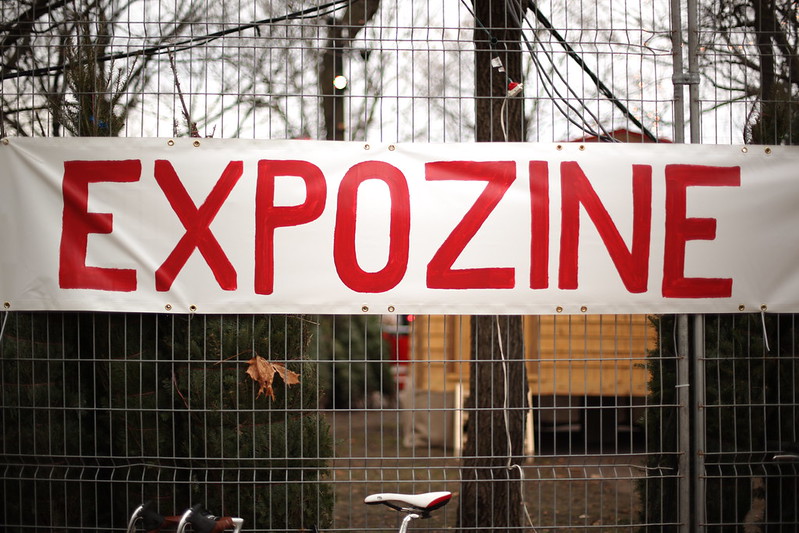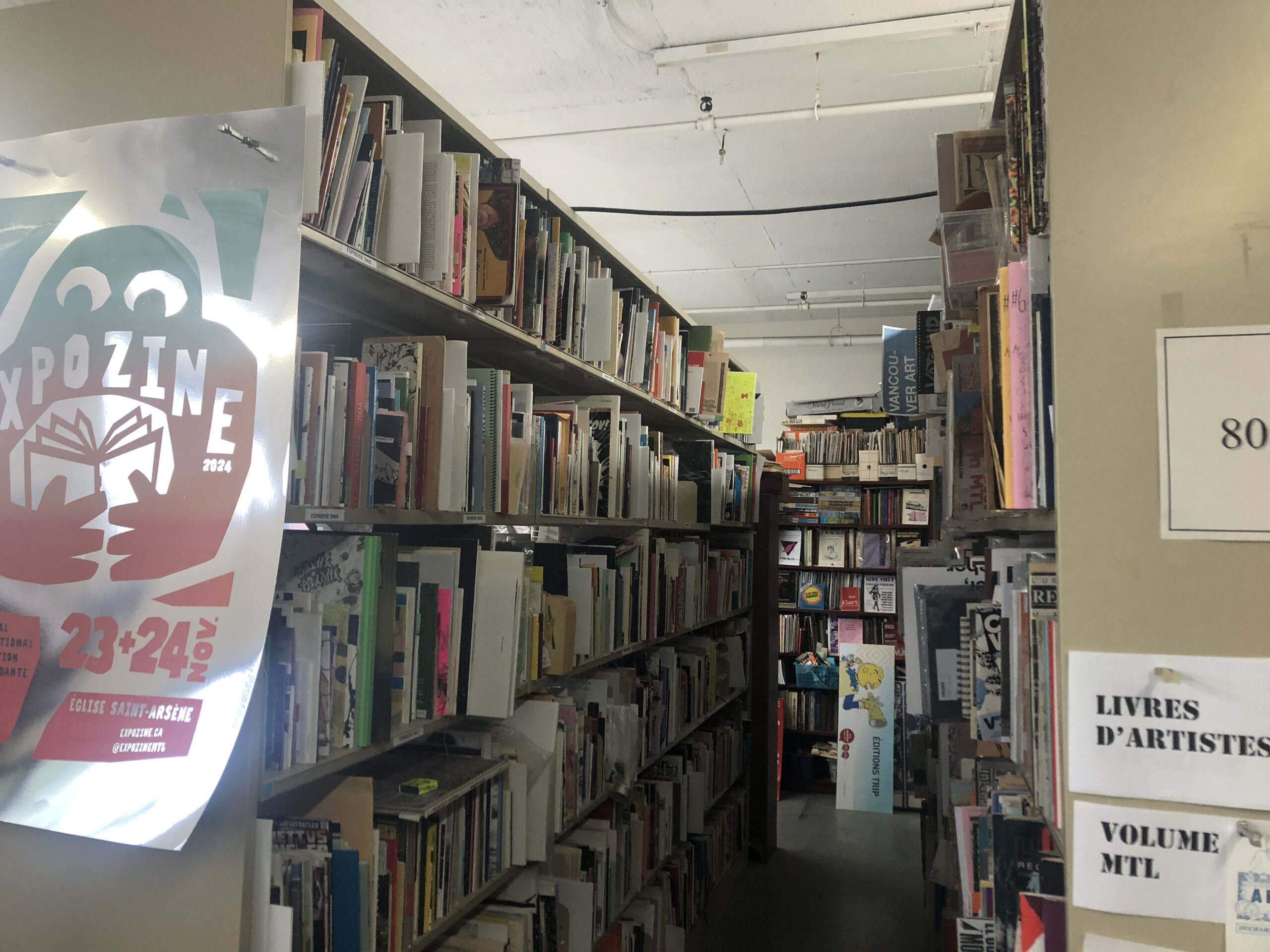The past two or three decades have seen an emergence in archival practice of more grassroots projects and archival initiatives dedicated to recoding and preserving the memories and histories of different communities or social movements that have remained under-voiced and under-represented. The failure of many larger institutions to take marginalized histories into account has been the impetus for many such an archive to open its doors. Indeed, the very existence of such archives can be read as an indictment of the failure of larger institutions in the breadth of stories they deem worthy of preserving (Hopkins, 2008). Though this is an archiving borne out of necessity, there might be something to be gained from working from an absence. Derrida famously wrote about the ways in which the structure of the archive determines what can be archived within it (Derrida, 1996), but what would an archive look like that allows its contents to determine its structure?

I would like to suggest here
I would like to suggest here that archives operating out of the gaps in traditional archives are in fact better suited to serve the communities they seek to preserve than larger institutions due to the freedom that their independence offers them. This independence allows them to directly question archival norms by deciding how best to approach their collections based on their contents. Taking as an example ARCMTL, I examine the ways in which the archive was built around, and follows the ethos of, its specific material culture. This manifests itself mainly in the double mandate of promoting and preserving which avoids a stilling of the ongoing communication so central to the culture. I argue that this allows the archive to function as a productive space, encouraging and facilitating active engagement with the community, in a manner that benefits both parties.

ARCMTL is a documentation centre situated in Montréal dedicated to promoting and preserving the marginal and underground culture of the city
At the time of its founding, it was difficult to find larger institutions with any interest in preserving independent or countercultural materials such as demo tapes, posters, flyers, zines, and other pieces of ephemera, thus, in 1998 the archive was started by a group of artists, musicians, and writers turned archivists by the necessity of preserving the history they saw unfolding around them. In the case of ARCMTL it is important to consider just how much of the material produced from the counterculture is fundamentally social and collective in its nature from its conception, creation, and distribution. This then becomes a large part of the operation of the archive, most obvious in its double mandate of preserving and promoting.
The archive’s yearly zine fair Expozine for which it is best known is perhaps the strongest example of this double mandate in action. The fair allows both artists and self-publishers a place to distribute their creations to the public, but also an easy entry into the archive itself, which collects zines every year directly from the fair to be added to their collection. At their core, zines are cheaply made and widely disseminated displays of specific cultures and political movements that are often left to the wayside of history. Though they often travel widely, it is in their nature to be circulated only within zine circles, and so fairs such as Expozine provide a perfect place for zines to be distributed and for their social nature to be engaged with.
This social dimension has been widely recognized by zine theorists, Radway (2011) describing zines as a medium of participatory communication, and Gunderloy and Dodge (1995, 1990) writing about them as acts to be engaged in and passed on beyond their existence as texts
Such social and communicative materials are perhaps also an ideal place from which to explore new visions of the archive. In recent years, there has been more and more of a discussion within archival theory around the archive as product and process (Ketelaar, 2017). Flinn and Stevens (2009) have written that, alongside this “expanding and expandable view” of what a record can be, has come a more complex understanding of what constitutes an archive. This discussion is imperative too, especially due to the anarchist nature of these countercultural publications and what is often considered to be the stillness of the archive. That is, the way the archive stills the motion of knowledge and communication is often counterintuitive when one considers that, as Brousseau and Hébert write in 2023, materials of the counterculture were often “created deliberately outside of the art institution as a means of direct expression and communication between members of a specific, outsider community. Aspects of dialogue, exchange, and network, integral to these artistic practices, can sometimes be lost when they are described and arranged in a collection.” If it is impossible to perfectly describe, the next best option is to keep the line of communication open.
the way the archive stills the motion of knowledge and communication is often counterintuitive

As a key part of the counterculture, zines have always been political, one of the simple reasons being that historically, those who have controlled the printed medium have also exercised power. Just as zines have been a means of organizing and regaining that power, archives preserving them can inspire resistance in the present. Alternate archives such as Interference Archive can be an integral tool in “strengthen[ing] the presence of marginalised voices in dominant historical narratives while also offering an important resource for community-building and political resistance” (Baker & Cantillon, p. 540). An archival shift has occurred in most movements as a means of challenging, correcting, and re-balancing historical absences and such archives, particularly in the community setting, have largely been regarded as “counter-hegemonic tools for education and weapons in the struggle against discrimination and injustice” (Flinn & Stevens, pp. 6–7). Resistance cannot end with preservation but must include the continued dissemination of materials and promoting their continued making. As such, thinking of the archive as something that can be activated as a tool rather than merely a way of fossilizing the past can allow us to imagine and organize a better future. Following Foucault (1993), it is only through the cultivation of localized resistance that any contraposition to prevailing power structures might be pursued.
Organizations such as ARCMTL invite us to reimagine archival space not as a static site of fact and record, but as a space for community, action, and resistance. This reimagining of the primary functioning of an archive allows us to activate its contents as a tool through which we can at once preserve that which would be forgotten, but also imagine and organize for a better future. Furthermore, the trust the archive has earned from its community by supporting, preserving, and helping to build it has benefited both parties as well as proving to be a valuable example for critical archiving at large.

WORKS CITED
Baker, S., & Cantillon, Z. (2022). Zines as community archive. Archival Science, 22, 539–561.
Brousseau, Hélène, & Jessica Hébert. (2023). Off the grid: Exploring the human networks in
underground art making and collection building. In J. Camlot, M. Langford, & L. M. Morra (Eds.), Collection thinking: Within and without libraries, archives and museums (pp. 257–273). Routledge.
Derrida, Jacques. (1996). Archive fever: A Freudian impression (Eric Prenowitz, Trans.). University of Chicago Press.
Flinn, A. (2011). The impact of independent and community archives on professional archival
thinking and practice. In Hill, J. (Ed.), The future of archives and recordkeeping: A reader (pp. 145–169). Facet Publishing.
Flinn, A., & Stevens, M. (2009). ‘It is no mistri, wi mekin histri’. Telling our own story: Independent
and community archives in the UK, challenging and subverting the mainstream. In J. A. Bastian & B. Alexander (Eds.), Community archives: The shaping of memory (pp. 3–28). Facet Publishing.
Flinn, A., Stevens, M., & Shepherd, E. (2009). Whose memories, whose archives? Independent community archives, autonomy and the mainstream. Archival Science, 9, 71.
Foucault, M. (1993). Of other spaces: Utopias and heterotopias. In J. Ockman (Ed.), Architecture Culture 1943-1968 (pp. 419–426). Rizzoli International Press.
Hopkins, I. (2008). Places from which to speak. Journal of the Society of Archivists, 29(1), 83–109.
Hoyer, J., & MacPhee, J. (2022). Interference Archive: Building a counter institution in the United States [Zine]. Pound the Pavement, (29). Justseeds.
Lymn, J. (2014). Queering archives: The practices of zines [Doctoral dissertation, University of Technology Sydney]. Open Publications of UTS Scholars. https://opus.lib.uts.edu.au/handle/10453/29211
Radway, J. (2011). Zines, half-lives, and afterlives: On the temporalities of social and political change. Publications of the Modern Language Association of America, 126(1), 140–50.

